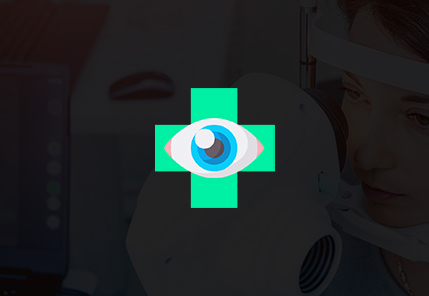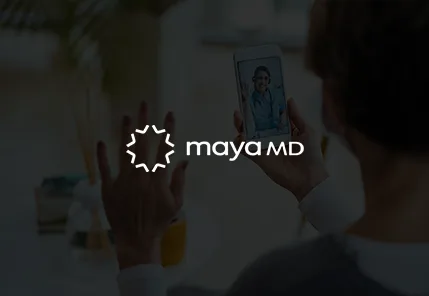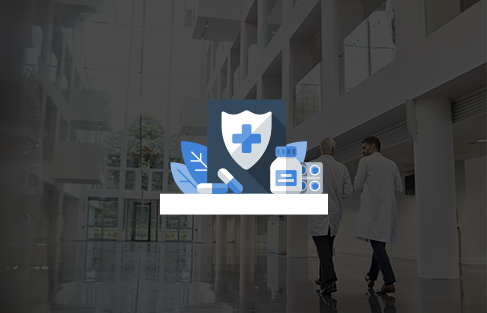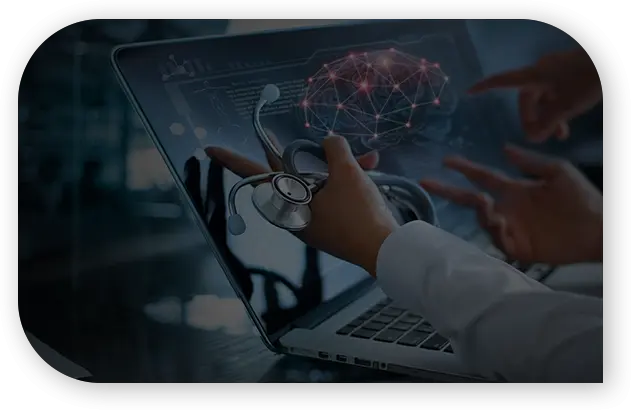Trusted by:
Refine patient’s healthcare journey through a comprehensive digital front door
All-Encompassing Personal Health Information (PHI)
Our patient portal development ensures that patients have complete, unfettered, and 24/7 access to their clinical notes post-consultation, fostering transparency and engagement in their healthcare journey. This also aids in addressing the open notes international movement. By centralizing medical history, lab results, and treatment plans, the PHR system not only streamlines patient-doctor communication but also supports continuity of care, even when switching providers or navigating complex health systems.
AI-Enabled Telehealth
With AI, improve the convenience and accessibility of your healthcare services. Incorporate functionalities like AI-enabled provider transcripts, ML algorithm-powered symptom checker, sentiment analysis, anomaly detection for early intervention, predictive analytics for better resource utilization, NLP-based clinical notes interpretation, integration with Smart wearables, etc. in your custom patient portal. It helps in predicting patient needs, personalizing treatment plans, and optimizing healthcare outcomes. It contributes to a reduction in hospital readmissions and facilitates the management of healthcare resources by predicting peak demand times and patient influx.
Dedicated Disease Management Modules
Offer patient-centric care plans tailored to specific chronic conditions such as diabetes, heart disease, and asthma. The dedicated disease management modules of our patient portal integrate evidence-based guidelines and personalized treatment strategies. It incorporates predictive analytics to anticipate disease progression and prevent complications. This feature can significantly reduce healthcare costs by mitigating the risk of emergency interventions and hospitalizations.
Seamless EHR & Third-Party App Integration
Enables a cohesive healthcare ecosystem by allowing diverse applications (PMS, CRM, Pharmacy, Labs), electronic health records (EHR), remote patient monitoring(RPM) apps, and patient portals to work in sync. It facilitated real-time data exchange ensuring instant access to critical patient information and informed decision making. It paves the way for holistic data view, advanced data analytics, and makes the system compliant with regulatory requirements.
Personalized AI Avatar
Using AI to connect data from EHRs and smart wearables to offer personalized health recommendations. It enables a real-time snapshot of a patient’s current health status. With features like health scores, mood tracking, mental health support(stress-relief exercise, mindfulness medication), Health-goal setting, AI-Health assistance, etc. you can mitigate potential risks to patient health. It can enhance the overall patient experience and provide them with a personalized touch.
Meet Regulatory Compliance
Meet evolving regulatory standards, such as the Stage 2 Meaningful Use criteria. This criteria mandates that providers offer patients online access to their medical records, which has been a significant driver in the adoption of patient portals. Our patient portal development also aligns with the Promoting Interoperability Program ensuring that all patients have the capability to view, download, and transmit their health information. We have expertise in developing region-specific compliant software like HIPAA for the US, GDPR for Europe, etc. Adhering to these regulations effectively and promptly is essential to avoid hefty financial penalties.
Customer success stories

Developing a comprehensive EHR system for the largest eye care group in the United States
Read More >
Developing an AI-powered telehealth application for a US-based health tech firm
Read More >
New York’s leading hospital reduces door to balloon time for STEMI patients through an emergency response app
Read More >Get the perfect patient portal developed for your practice.
Features we can help you develop for your patient portal
Personalize your patient portal with a variety of complaint features that enhance the functionality and interoperability in your system
-
Medical record management
-
Appointment scheduling and management
-
Telehealth
-
Lab report sync
-
Medical history tracking
-
Role-based access control
-
Care coordination
-
Automated notifications & alerts
-
Secure billing and payments
-
Provider directory
-
Real-time health tracking and monitoring
-
Educational resources
-
Prescription refills
-
Personalized dashboards
-
Multi-lingual support
-
Insurance management
-
AI-driven chatbots
-
Personalized health plans
-
Chronic care management
-
IoT/wearable integration
-
API & third-party app integration
Benefits of patient portal development that set you apart

The expanding role of patient portal in healthcare offering
The integration of a patient portal into your healthcare system is becoming increasingly essential. The market for patient portals is projected to expand significantly, reaching $11.14 billion by 2028, with a robust CAGR of 20.2%. The healthcare industry is experiencing growth due to advancements in technology such as AI-enabled features like chatbots, virtual assistants, transcripts, etc. that streamline patient communication and the expansion of telehealth services. With ongoing regulatory support and incentives, these technological advancements are being embraced by healthcare providers across the board. As we prioritize value-based care, focused on improving efficiency and patient outcomes, the need for secure and interoperable patient portals has never been greater. By integrating patient portals, providers can significantly enhance patient engagement, improve clinical outcomes, and boost productivity.

Why Daffodil Software
Recognized excellence, proven customer satisfaction
Categorized as an aspirant in global PEAK Matrix assessment
Recommended vendor for custom software development services
Mentioned as a company to watch in the AI space
Categorized as a leader in digital engineering services
20+
years of software engineering excellence
150+
global clientele
4.8
Avg CSAT score
95%
customer retention rate
Innovation redefined
We create agile and adaptable healthcare applications to help you improve patient outcomes.
Watch our brand video.
Need to discuss your patient portal development requirements?
Sign up for a 30 min no-obligation
strategic session with us
- Validation of your project idea/ scope of your project
- Actionable insights on which technology would suit your requirements
- Industry specific best practices that can be applied to your project
- Implementation and engagement plan of action
- Ballpark estimate and time-frame for development
Frequently Asked Questions
A well-designed patient portal should incorporate the following key features:
1. All-Encompassing Personal Health Information (PHI): The portal must provide a comprehensive view of the patient’s medical records, including medication lists, lab and test results, medical history, and clinical summaries.
2. AI-enabled Telehealth: Integration of artificial intelligence with telehealth capabilities allows for smarter patient engagement, predictive analytics, and enhanced care delivery.
3. Dedicated Disease Management Modules: These specialized sections within the portal can help patients manage chronic conditions with tailored content and tracking tools.
4. Seamless EHR & Third-Party App Integration: The portal should integrate smoothly with electronic health records (EHR) and other healthcare apps to ensure a unified patient experience and prevent data silos.
5. Personalized AI Avatar: An AI-driven virtual assistant can guide patients through the portal, answer their questions, and provide a more interactive experience. Also, an AI avatar can provide a real-time snapshot of a patient’s health.
6. Meet Regulatory Compliance: The portal must adhere to healthcare regulations, such as HIPAA in the United States, and GDPR in Europe to ensure patient data privacy and security.
Patient portals can significantly optimize healthcare providers’ expenses by:
- •Reducing administrative costs through self-service features for appointment scheduling, prescription refills, and accessing test results. They enhance efficiency, leading to better resource allocation and the potential to increase patient throughput.
- •Automated reminders from the portal reduce no-shows, preserving revenue.
- •Patient engagement through the portal improves health outcomes and can decrease the need for costly interventions.
- •Online billing and payment functionalities streamline revenue cycles and improve cash flow.
- •Accurate data entry by patients can lead to improved documentation and coding for billing, while centralized access to patient information helps avoid duplicate testing.
- •Compliance with regulatory requirements through portal usage can result in financial incentives, and a user-friendly portal can improve patient retention and attract new patients, further enhancing financial stability for healthcare providers.
The total cost of ownership for a custom patient portal is highly variable and depends on your specific requirements. Initial development costs are influenced by the desired features, level of customization, and the scale of your practice. Implementation expenses include data migration, staff training, and initial support, which vary based on the complexity of your existing systems and processes. Ongoing maintenance costs for updates and upgrades will also contribute to the TCO and depend on the evolving needs of your practice. Given the customized nature of patient portals, it’s difficult to provide a precise cost without a detailed assessment of your needs. A detailed consultation is necessary to determine a more accurate cost estimate tailored to your organization.
Our patient portal is designed to seamlessly integrate with your current Electronic Health Records (EHR) or Electronic Medical Records (EMR) system. This integration allows for real-time data exchange, ensuring that patient information is up-to-date and accessible both within the portal and your existing EHR/EMR system. The integration process involves:
- •Compatibility Check: We ensure compatibility between our patient portal and your EHR/EMR system, including software versions and customizations.
- •Data Mapping: Our team will collaborate with you to establish a data flow between systems, ensuring accurate synchronization of patient health records, appointments, prescriptions, and other pertinent information.
- •Secure Connectivity: We use industry-standard protocols like FHIR, or other APIs supported by your EHR/EMR to establish a secure connection. This ensures safe data transfer while maintaining patient privacy and compliance with healthcare regulations such as HIPAA.
- •Testing and Validation: Before going live, we thoroughly test the integration to ensure that all functionalities are working as expected and that data integrity is maintained in both systems.










